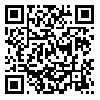BibTeX | RIS | EndNote | Medlars | ProCite | Reference Manager | RefWorks
Send citation to:
URL: http://jhehp.zums.ac.ir/article-1-38-en.html


 , Rohangiz Moradjoo1
, Rohangiz Moradjoo1 
 , Mehran Mohseni2
, Mehran Mohseni2 
 , Koorosh Kamali3
, Koorosh Kamali3 

 , Zohre Farahmankia4
, Zohre Farahmankia4 
 , Jafar Taran1
, Jafar Taran1 

2- Food and Drug Control Department School of Pharmacy, Zanjan University of Medical Sciences. Zanjan, Iran.
3- Department of Statistic, School of Public Health, Zanjan University of Medical Sciences. Zanjan, Iran.
4- School of Health ,Head of Chemistry Laboratory, Zanjan University of Medical Sciences. Zanjan, Iran.
Background: Dithiocarbamates, the main group of fungicides, are used to control about 400 pathogens in more than 70 crops. These pesticides are widely applied to crops including potato, cereal, apple, pear and leafy vegetables throughout the world since 1960. From the late 1980s, using these fungicides has caused much debate among regulators about their long-term effects on consumers and occupational users.
Method: In this study the residues of Dithiocarbamates in cucumber and tomato using the colorimetric method (Keppel method) was measured. Respectively 80 and 45 samples of greenhouse cucumber and tomato were collected from Zanjan vegetables center in autumns and winter 2013. The samples were analyzed in 4 treatments of: unwashed, washing with water, washing whit detergent and peeling.
Result: The results showed that the average concentration of Dithiocarbamates residues in unwashed greenhouse cucumber and tomatoes were 384.5 µg/kg and 65 µg/kg respectively. 35% and 5% of unwashed and water washed cucumber and tomato samples (respectively) had higher Dithiocarbamates residue than MRL recommended by Institute of Standards and Industrial Research of Iran (0.5mg/kg).
Conclusion: The treatments of washing and peeling had significant effect on the reduction of Dithiocarbamates residues in the all samples.
Received: 2015/08/17 | Accepted: 2015/09/22 | Published: 2016/01/27
| Rights and permissions | |
 |
This work is licensed under a Creative Commons Attribution-NonCommercial 4.0 International License. |
© 2024 The Author(s)

.png)



